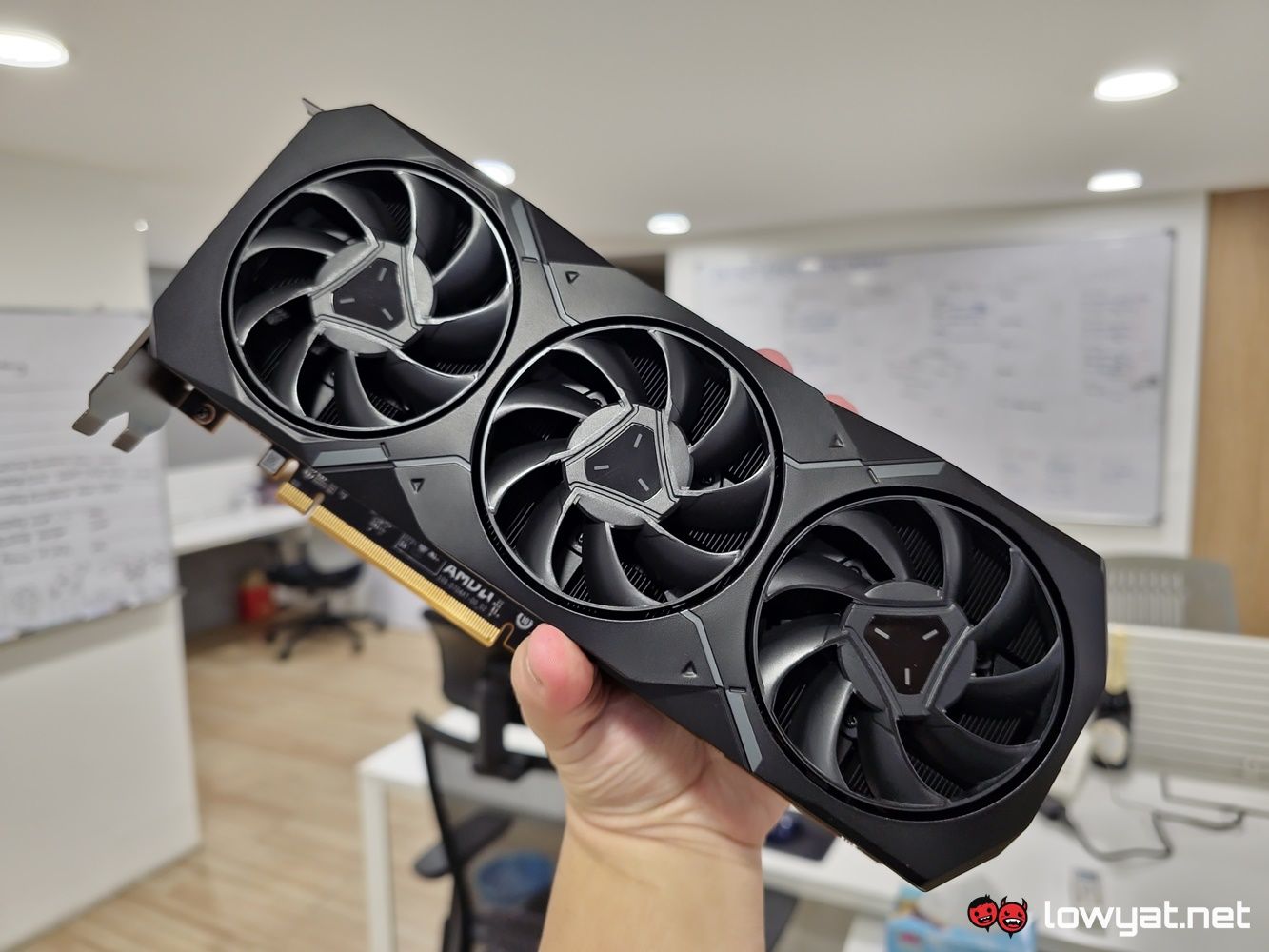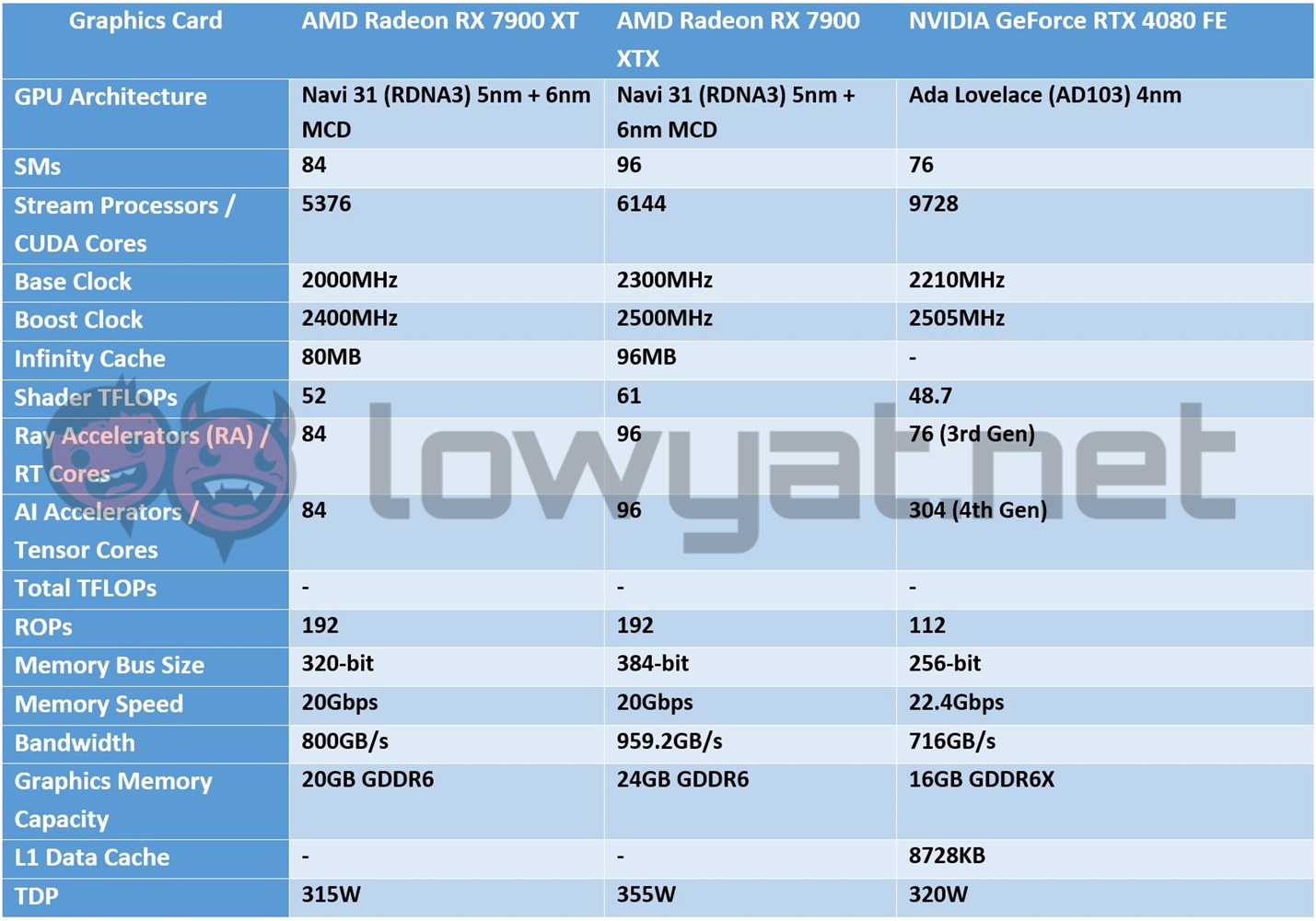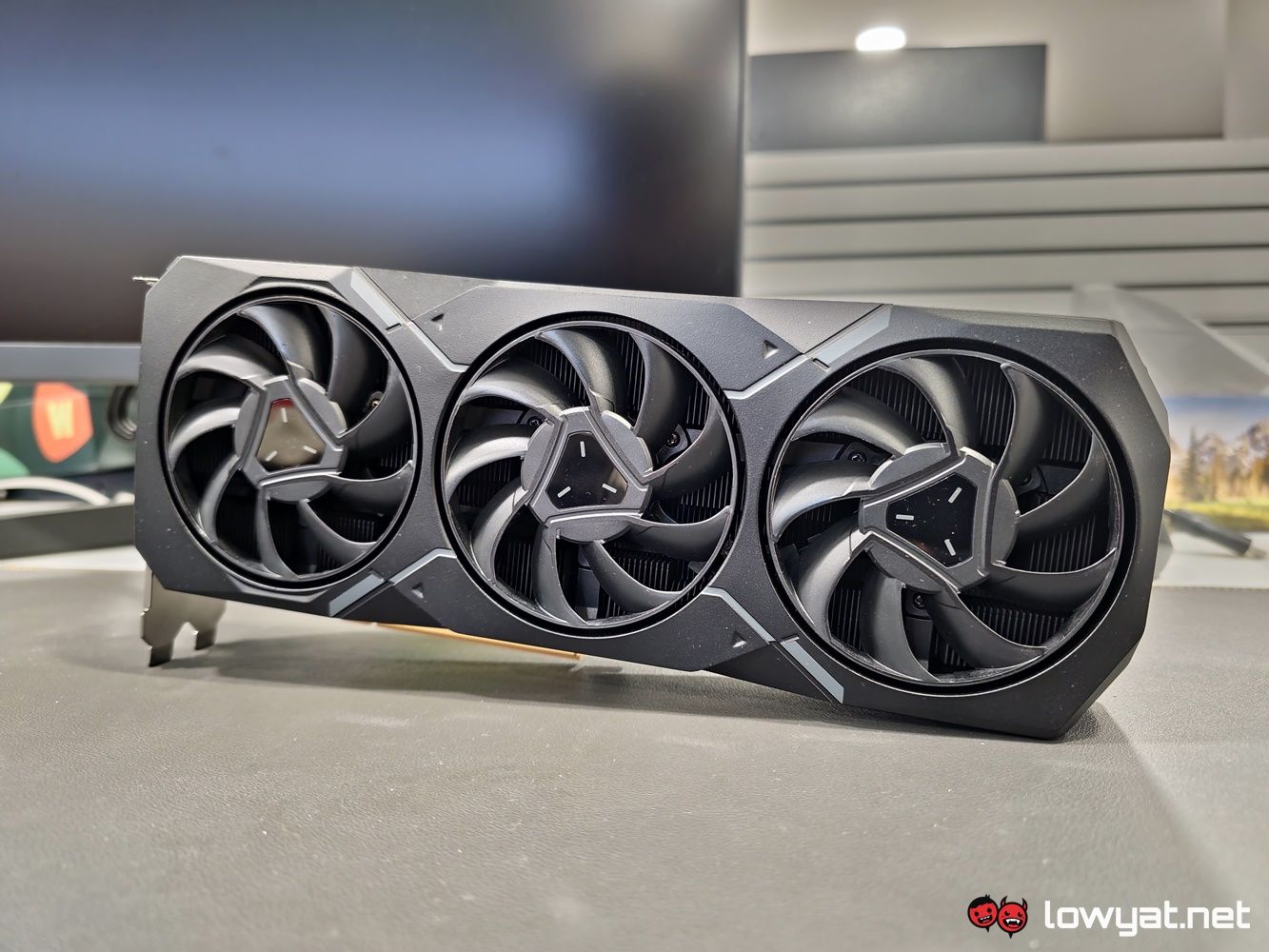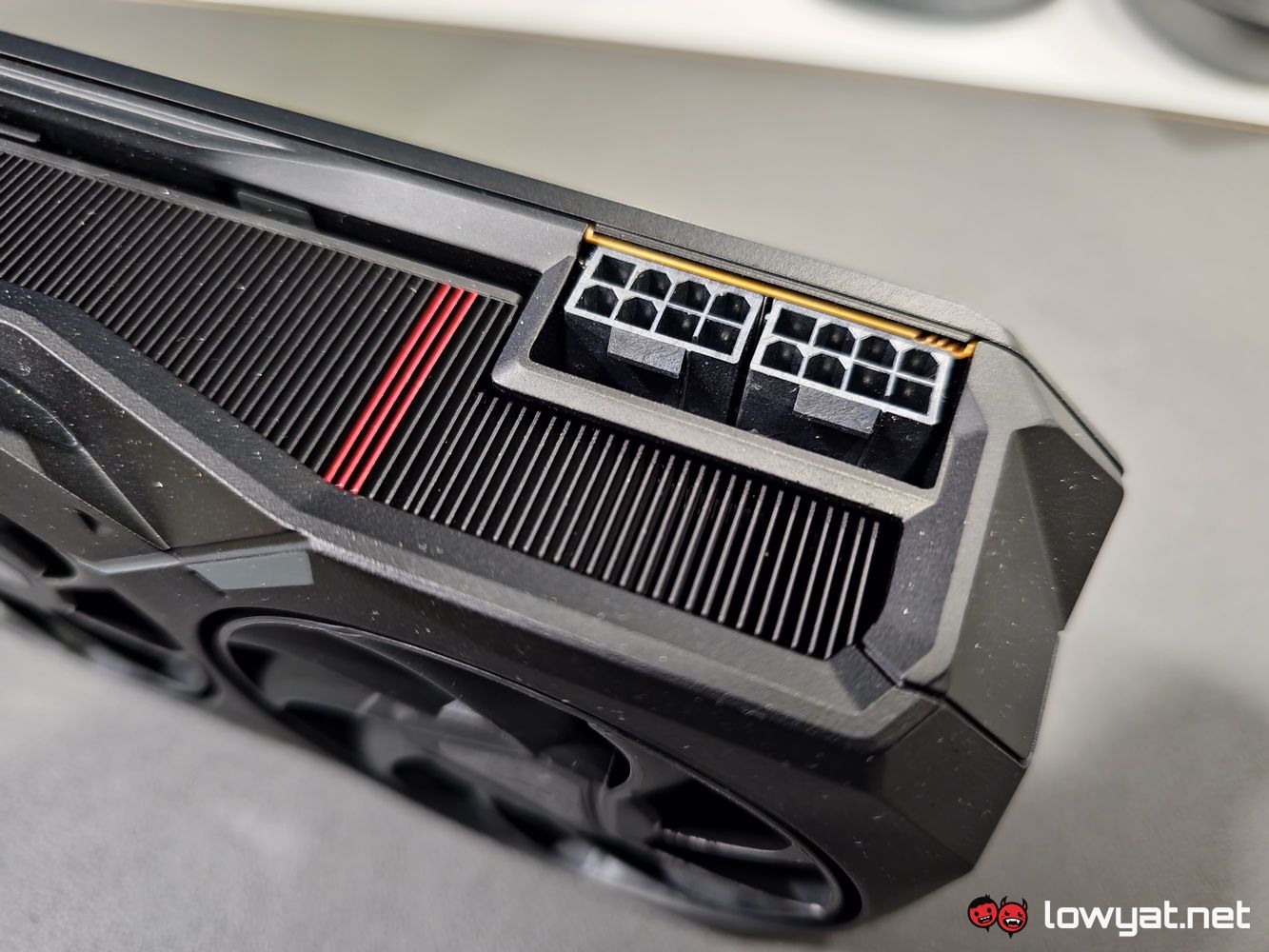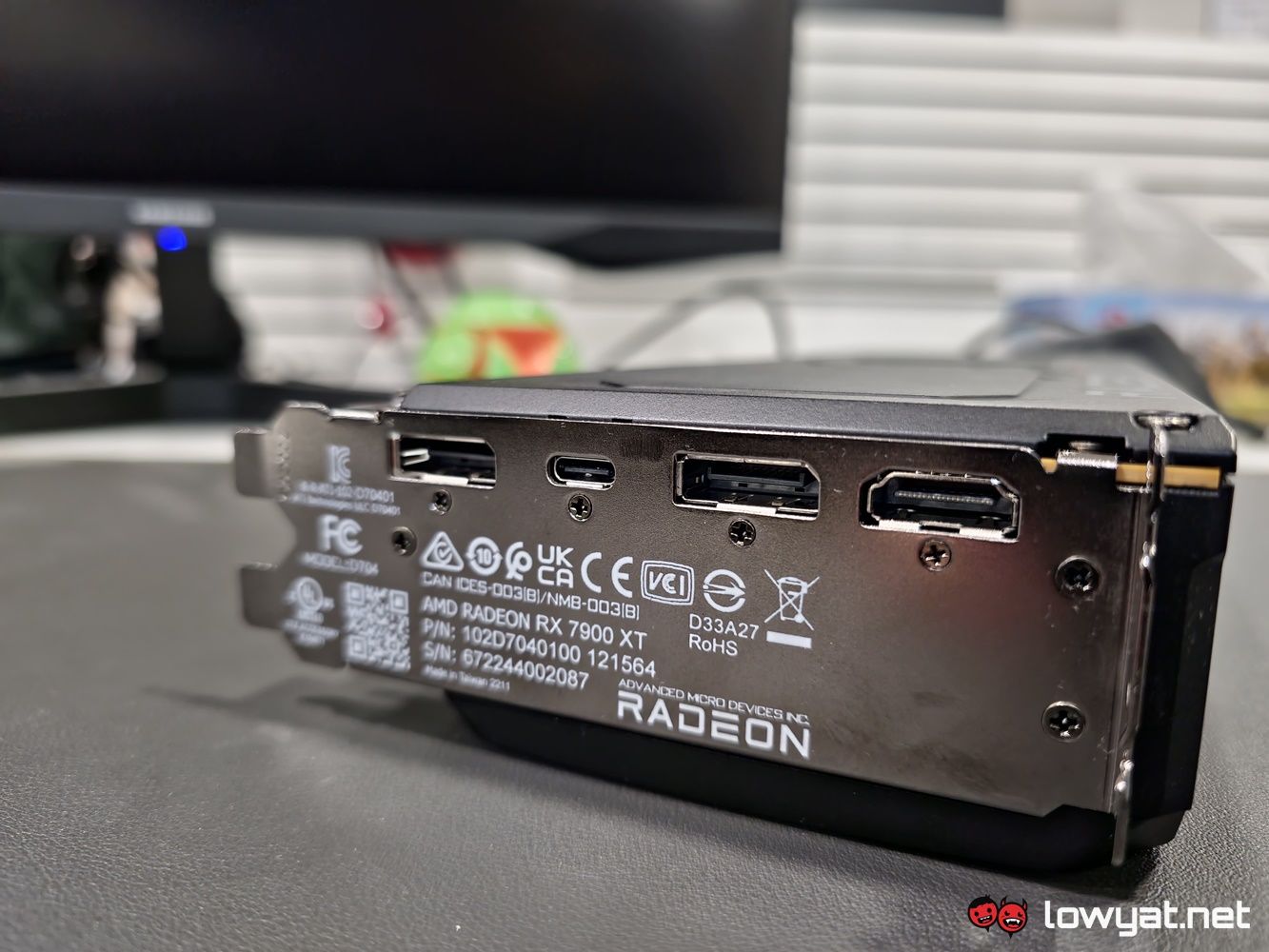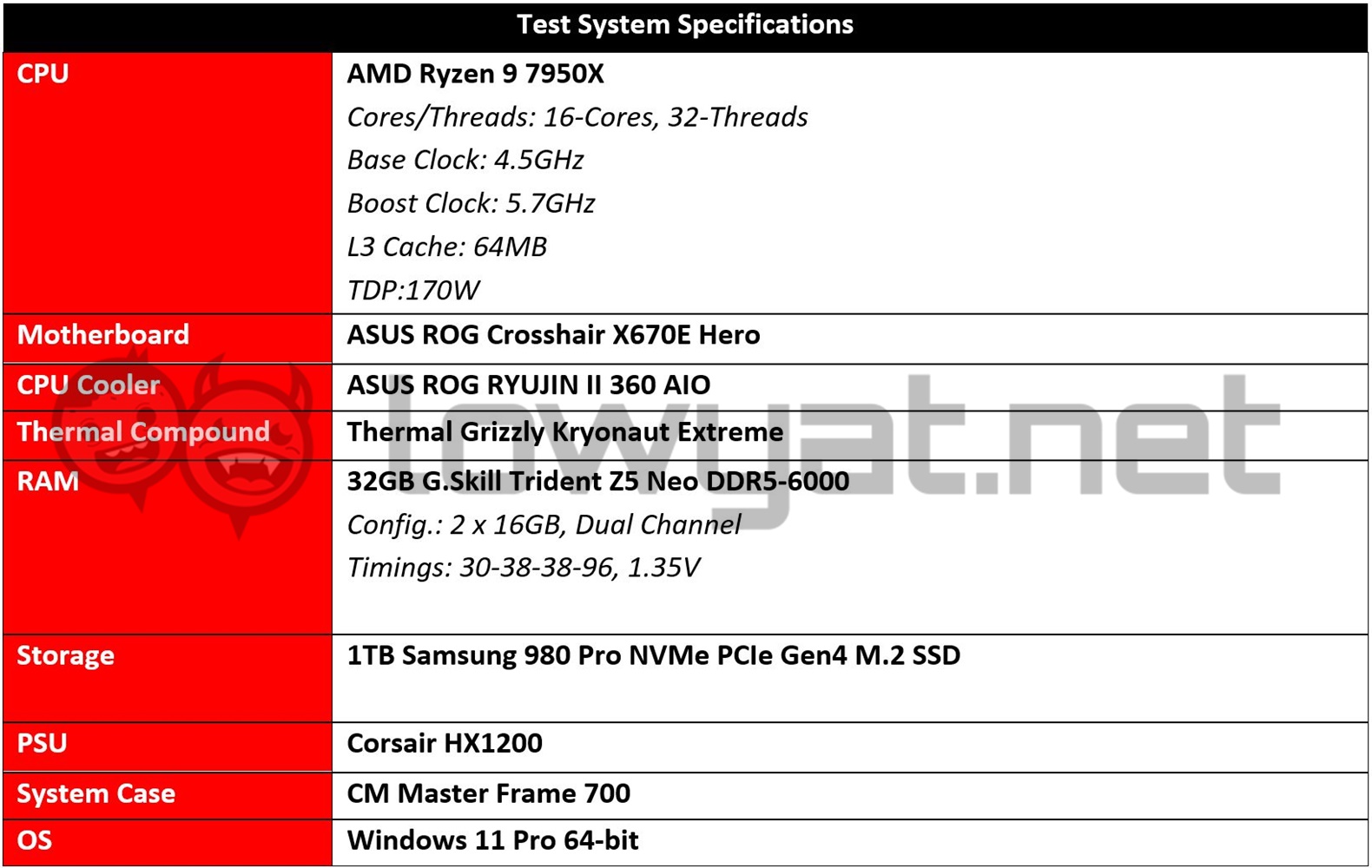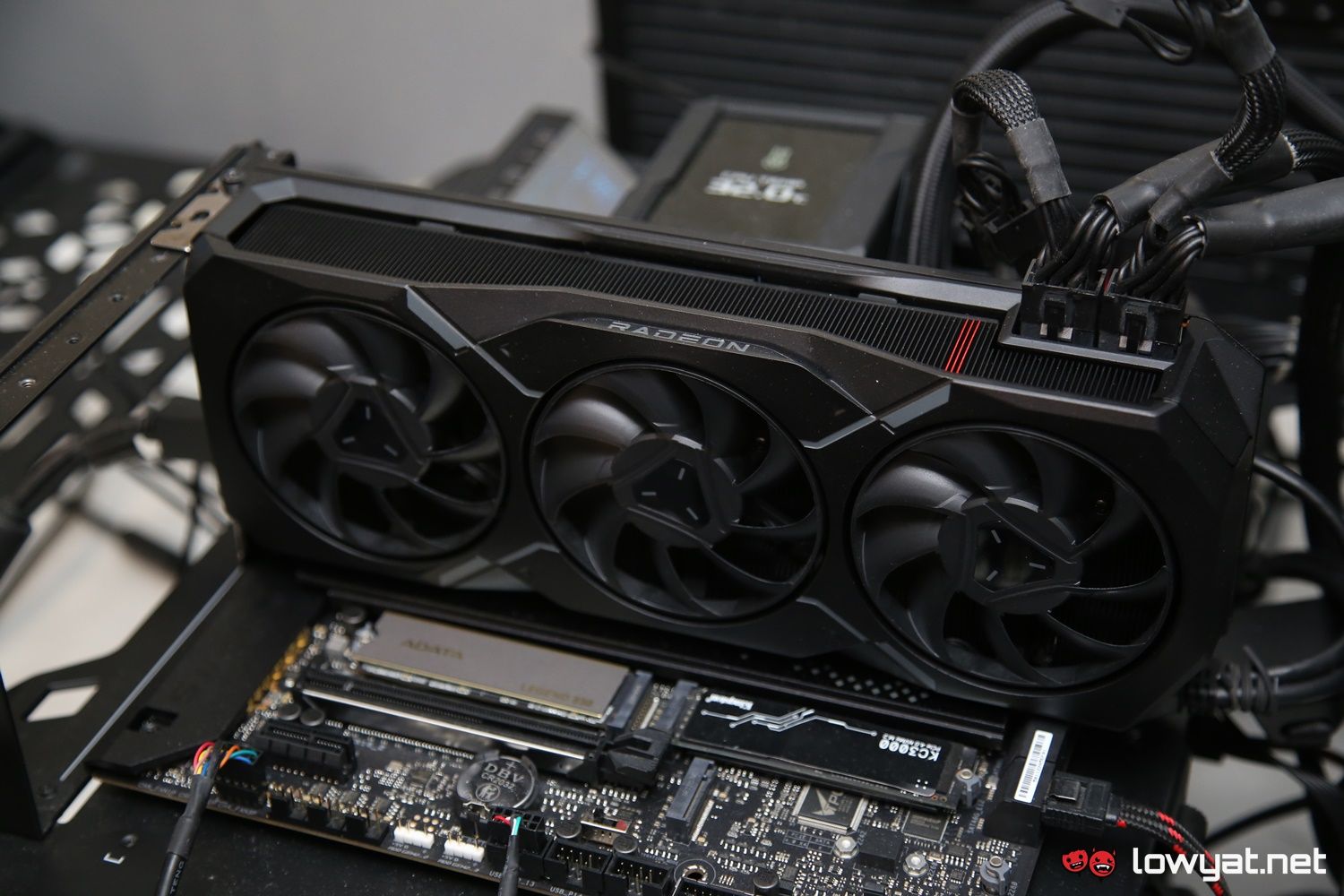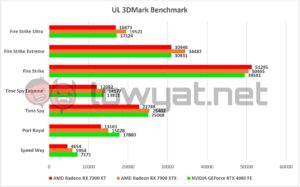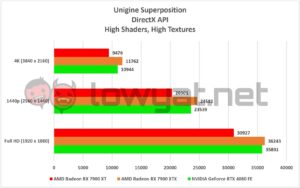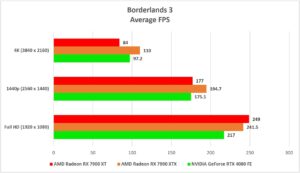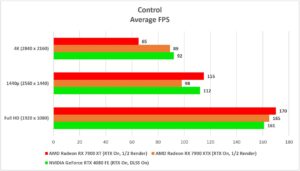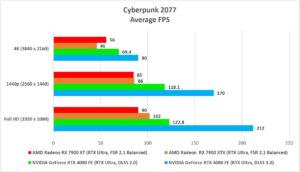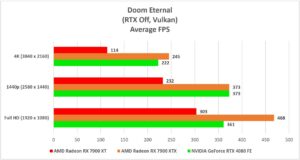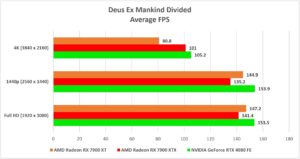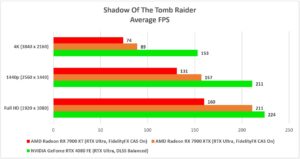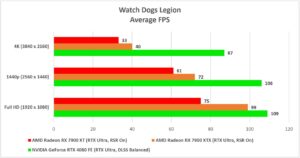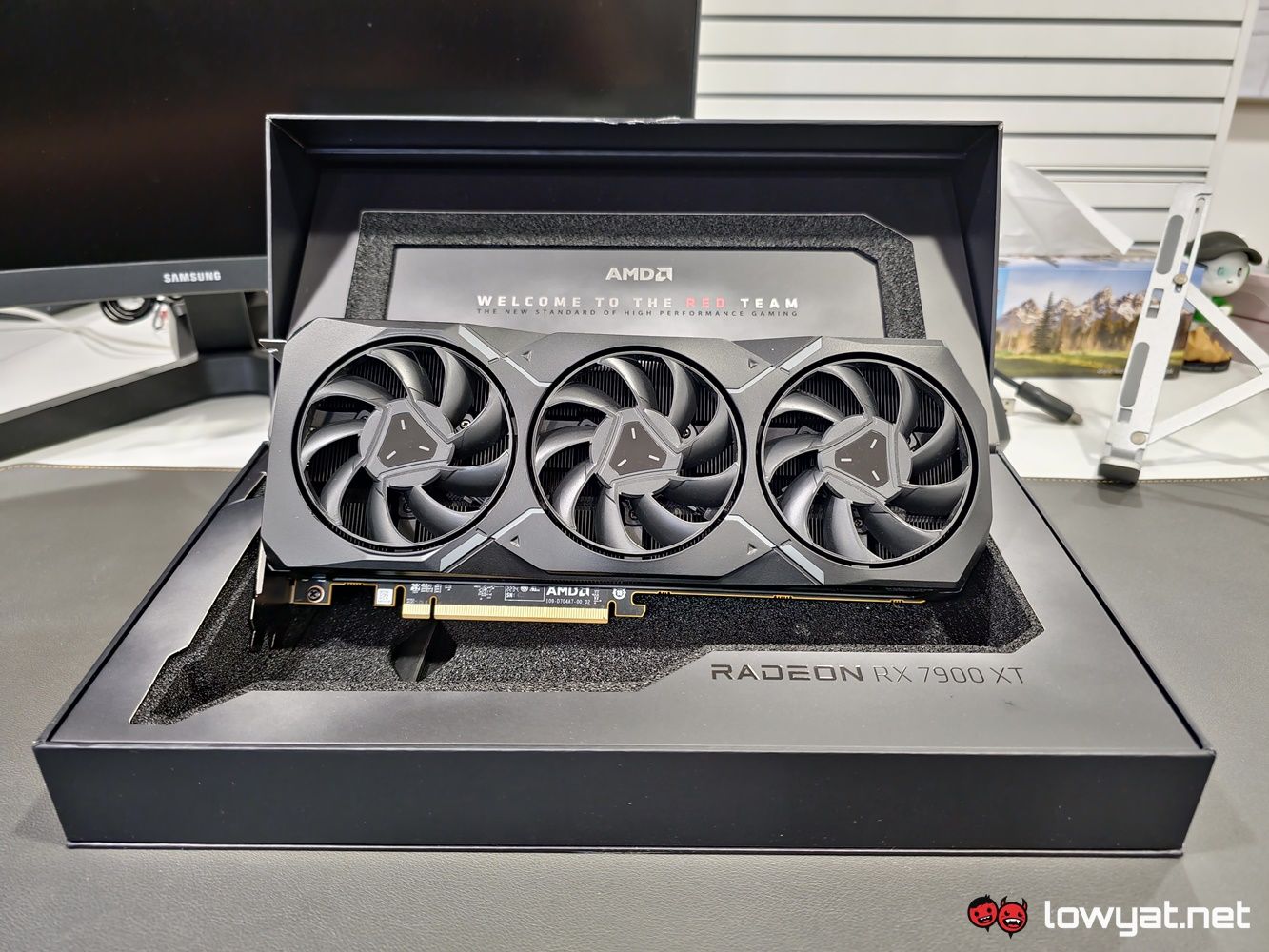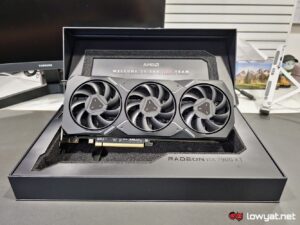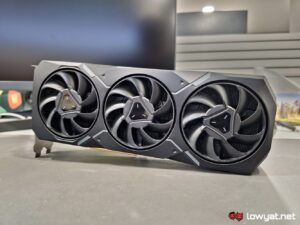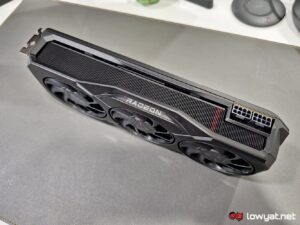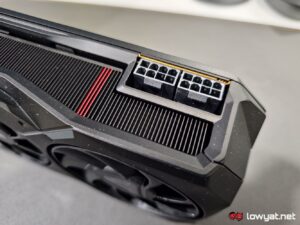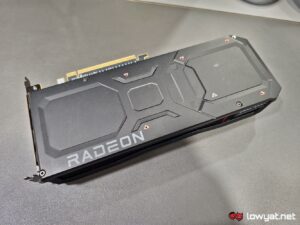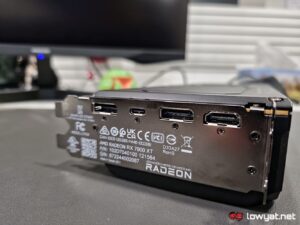It’s been a hot minute since AMD’s Radeon RX 7000 Series lineup made its debut and from our review of the RX 7900 XTX, we clearly saw the appeal of the card as an alternative to NVIDIA’s GeForce RTX 4080, and rightly so. In this review, we’ll be taking a look at the other card in the lineup, the lower-tier 7900 XT, and what exactly it brings to the table of enthusiast-grade graphics cards.
Specification
Like the 7900 XTX, the 7900 XT is basically a near-carbon copy of its more powerful brother, with regard to the GPU architecture that it uses. It is still based on the same RDNA3 architecture, fabricated from TSMC’s 5nm process node. Instead of putting on its silicon eggs in one massive chip, much like NVIDIA’s Ada Lovelace design, the GPU core is also flanked by a handful of 6nm multi-chiplet design cores that aid and help take some of the load off the main core.
Of course, some of the more obvious differences of the 7900 XT include the lower 2000MHz base clock and 2400MHz boost clock. For context, the 7900 XTX has a defacto base and boost clock of 2300MHz and 2500MHz, respectively. It’s also got a lower Ray Accelerators (RA) and AI Accelerators core count, a smaller memory bus size of 320-bit, and 4GB GDDR6 memory less than its sibling. For that matter, it’s also less power hungry, with a TDP of 315W.
Design
While it is unlikely that AMD’s reference design for its Radeon RX 7900 XT is going to be available to the masses, that doesn’t detract from the fact that this card still exudes character. Again, the carbon copy terms comes into play here – like the XTX, this card wears the same all-black cooler shroud from the front, along with the industrial-inspired backplate that could’ve been taken off an excess piece of sheet metal, used in automobile manufacturing.
In true AMD fashion, you’ll find the red three-line accent located at the end of the 7900 XT’s spine, painted directly on to three of the heatsink’s fins individually, and right next to the dual 8-pin PCIe power ports. Yes, just like the XTX, the XT is also an exercise in performance-per-watt for Team Red, unlike the RTX 40 Series, which actually requires an entirely new 16-pin PCIe Gen5 port to run.
Unlike the XTX, however, the reference 7900 XT doesn’t actually have any RGB LED built into it, so if you’re one of those gamers that enjoy having rainbow vomit cycling just out of the corner of your eye, you may want to consider custom-cooled solutions for this GPU. If you aren’t bothered by the allure of the 16.7 million colour spectrum and favour performance over aesthetics, then this card more than serve that purpose.
As for the ports on this 7900 XT, AMD has standardised it: one HDMI 2.1a port, two DisplayPort 2.1 with Ultra High Bit Rate (UHBR) of 13.5Gbps, meaning that this card is able to support 8K resolutions at refresh rates as high as 165Hz, or 4K at 480Hz. Additionally, there is also a USB-C port that can also be used as a DisplayPort 2.1 port, as well as support for AV1 encoding and decoding.
Testbed
Then as now, my testbench remains the same as before. By that, I mean I am testing the 7900 XT with the Ryzen 9 7950X, 32GB DDR5-6000 RAM, and the same ASUS ROG Crosshair X670E Hero motherboard. Because the testbench is also AMD-based, it means I am able to take advantage of the chipmaker’s Smart Access Memory (SAM) technology.
For comparison’s sake, I will be listing the 7900 XT’s performance metrics alongside the 7900 XTX and the RTX 4080 FE, given that the card is technically supposed to be on par with the latter.
Benchmarks
In the spirit of playing catch up, the 7900 XT shows that as powerful as this GPU is – and really, it is powerful – it is clearly on the ascending path of an incredibly steep hill of flagship dominance, especially when compared to the other two enthusiast-level gaming GPUs. In nearly all tests, both synthetic and real-world, the card really feels as if it was comfortably settled with the idea of third place.
In 3DMark, the only time the 7900XT ever overtakes both the XTX and RTX 4080 was with the Fire Strike test, which is still an impressive feat in and of itself, but even then, it simply outpaced its own sibling by a mere 800 points average. In Unigine Superposition, the reality of it playing catch quickly sets in once again, and that continues throughout the real-world gaming benchmarking portion of this review.
Again, I say that the 7900 XT plays 3rd place in nearly all the titles on my list, but there are a handful of games where it overtakes the other two cards. Borderlands 3, Control, and Deus Ex Mankind Divided (DXMD), in this case, are the titles where the card actually shows a better average framerate in both 1440p and Full HD resolutions, and to my surprise, it actually outperformed the XTX at 4K in Cyberpunk 2077. In the same title, however, you can actually see how close it was in 1440p against its sibling, to the point that any difference is actually negligible.
In all fairness, however, the 7900 XT clearly isn’t horrible in pumping out the framerate, not by any measure of the description. It’s important to remember that some of these titles are also ray-tracing capable and can be a little bias in the upscaling technology that supports it. Case in point, Cyberpunk 2077 is clearly more geared to take advantage of NVIDIA’s DLSS 2.0 Super Resolution and DLSS 3 technology, while older games like Watch Dogs Legion simply lack the support for AMD’s own FidelityFX Super Resolution (FSR). Turn the feature off and run said titles through traditional rasterisations, and the framerates will very obviously and quickly shoot up.
Temperature And Power Consumption
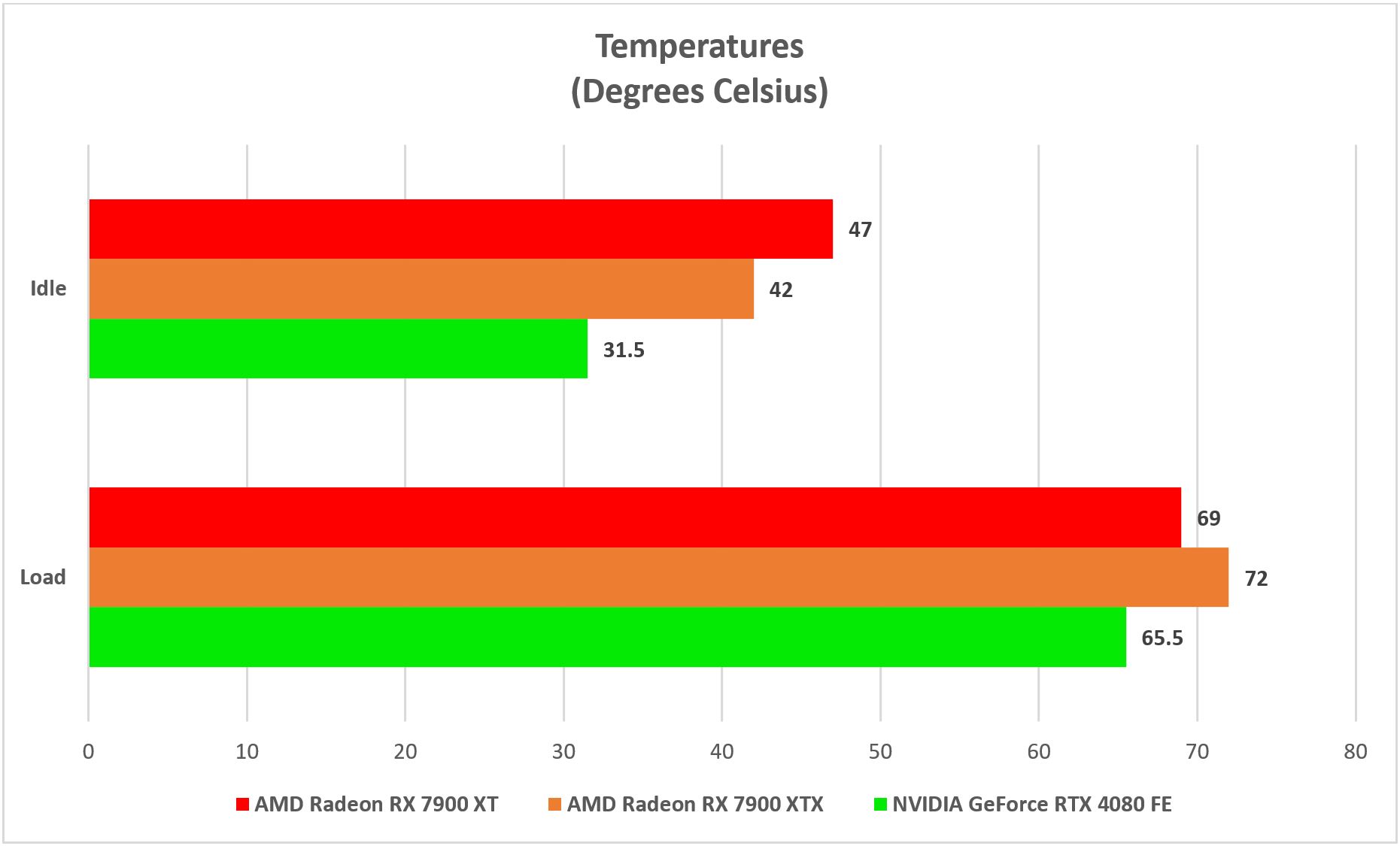 As for the thermal management of the 7900 XT, it is a bit odd that the card had a slightly higher average idling temperature, especially since the card has fewer components and features than its XTX counterpart. When running at full whack, it certainly runs cooler but unfortunately, the RTX 4080 here still takes the crown for thermal efficiency.
As for the thermal management of the 7900 XT, it is a bit odd that the card had a slightly higher average idling temperature, especially since the card has fewer components and features than its XTX counterpart. When running at full whack, it certainly runs cooler but unfortunately, the RTX 4080 here still takes the crown for thermal efficiency.
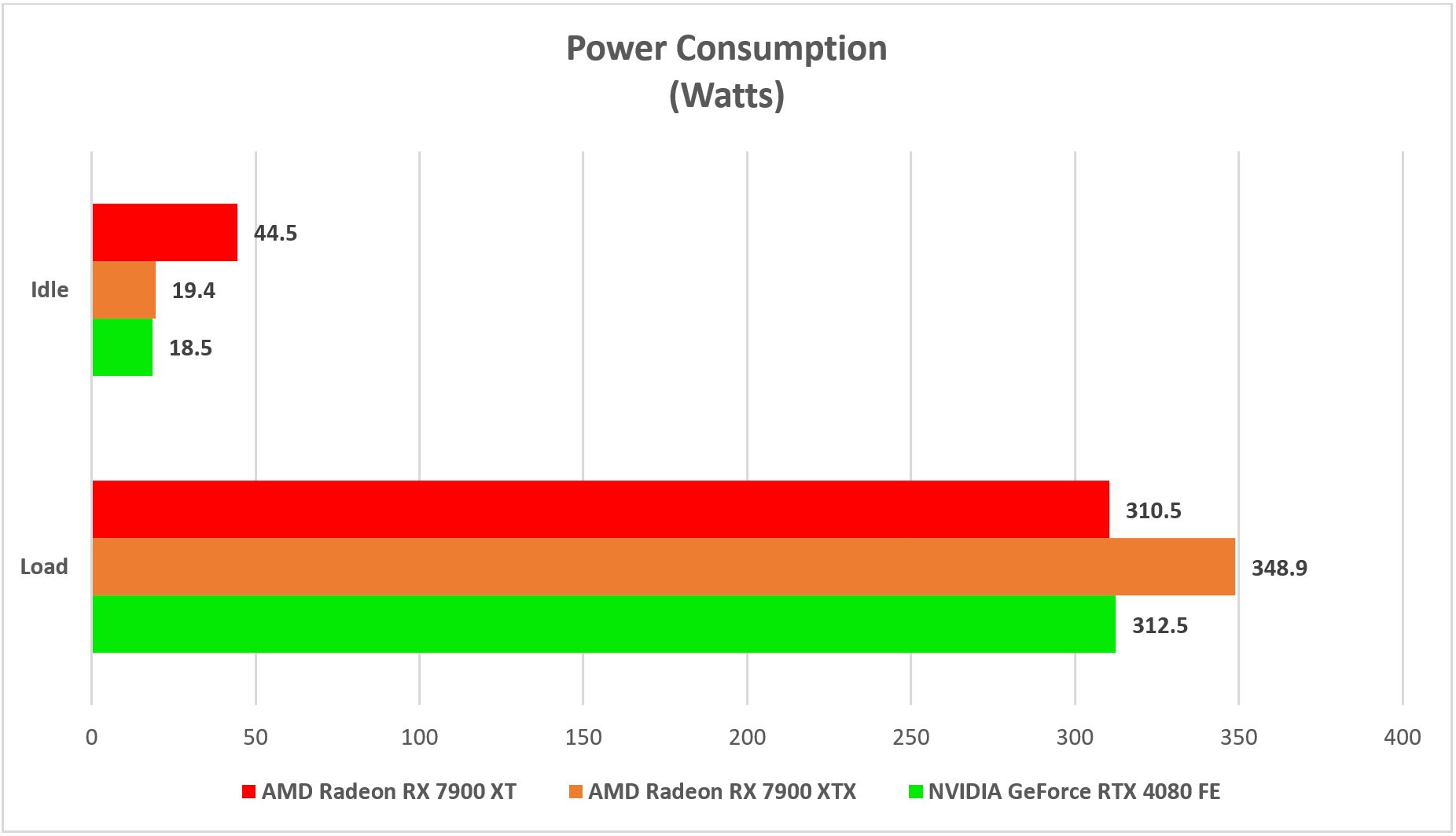 Thermals notwithstanding, the situation appears to look the same for the 7900 XT when it comes to its performance-per-watt. When left alone, the card is pulling 25 watts than the XTX and RTX 4080 but again, draws less and even matches Team Green’s own card in power consumption when put to the task.
Thermals notwithstanding, the situation appears to look the same for the 7900 XT when it comes to its performance-per-watt. When left alone, the card is pulling 25 watts than the XTX and RTX 4080 but again, draws less and even matches Team Green’s own card in power consumption when put to the task.
Conclusion
With a base SRP of US$899 (~RM4064), the AMD Radeon RX 7900 XT is still a damn sight cheaper than the NVIDIA GeForce RTX 4080 and despite its expectedly lower-tier performance metrics versus its green counterpart, this card is very obviously and clearly still able to till the field that is 4K resolution. And all it requires is two 8-pin PCIe connectors.
Yes, I am fully aware that in most gaming scenarios, the card can barely stay above the 60 fps mark but that’s mainly because I am running each game at its highest graphics presets. Honestly, you can just dumb down a couple of settings in-game to boost the framer count, but personally, I’m a gamer that favours a balance between graphics and performance, hence my choice of presets during my in-depth reviews. But make no mistake, the 7900 XT is still a very powerful card and again, if you’re the kind of person that can do without the ray-tracing aesthetics, then trust me: this will go like a bat out of hell.
Photography by John Law.
Follow us on Instagram, Facebook, Twitter or Telegram for more updates and breaking news.


